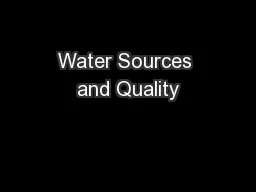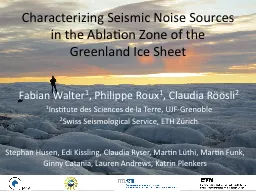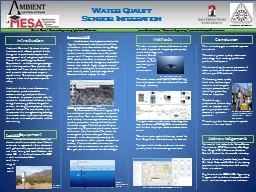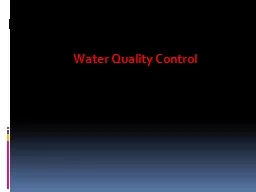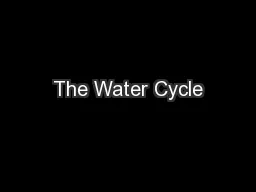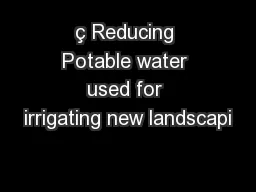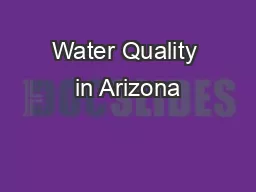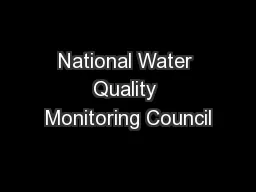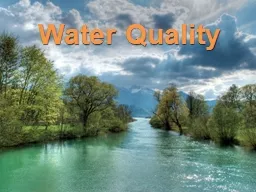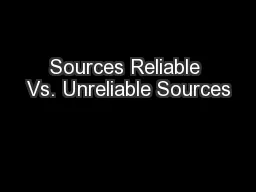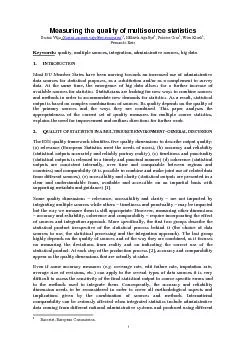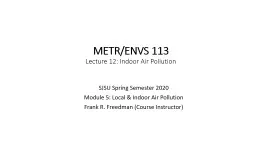PPT-Water Sources and Quality
Author : pamella-moone | Published Date : 2018-03-18
Water Sources and Main Characteristics Groundwater deepshallow wells Not exposed to pollution but once polluted restoration is difficult expensive and long term
Presentation Embed Code
Download Presentation
Download Presentation The PPT/PDF document "Water Sources and Quality" is the property of its rightful owner. Permission is granted to download and print the materials on this website for personal, non-commercial use only, and to display it on your personal computer provided you do not modify the materials and that you retain all copyright notices contained in the materials. By downloading content from our website, you accept the terms of this agreement.
Water Sources and Quality: Transcript
Download Rules Of Document
"Water Sources and Quality"The content belongs to its owner. You may download and print it for personal use, without modification, and keep all copyright notices. By downloading, you agree to these terms.
Related Documents

